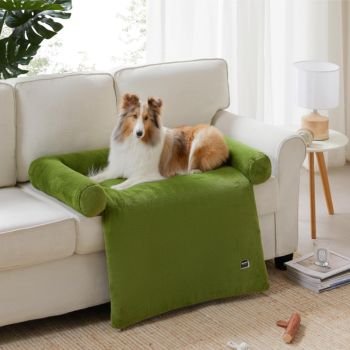In the realm of majestic canines, the Great Dane stands tall—literally and figuratively. Known for its colossal size, regal appearance, and gentle nature, the Great Dane captures the hearts of dog enthusiasts worldwide. Join us on an enlightening journey as we delve into the rich history, distinctive characteristics, and the myriad reasons why the Great Dane is not merely a dog but a true giant among companions.
Great Dane Dog Breed History
Ancient Origins:
The Great Dane’s roots extend far back in time, with depictions of similar giant dogs found in ancient Egyptian and Babylonian art. However, the breed as we know it today began to take shape in Germany.
German Development:
In Germany, the Great Dane, or “Deutsche Dogge,” evolved through careful breeding of larger mastiff-type dogs with sleeker, more agile hunting dogs. The goal was to create a breed that combined strength, speed, and grace.
European Nobility:
Great Danes gained favor among European nobility and were often kept for protection and as impressive symbols of power. Their imposing stature and gentle temperament made them sought-after companions in royal courts.
Identifying Characteristics

Grand Size and Build:
Great Danes are undeniably one of the largest dog breeds, with males standing at least 30 inches tall at the shoulder. Despite their size, they should exhibit a well-proportioned and muscular build, conveying strength and elegance.
Distinctive Coat Colors:
The breed showcases a variety of coat colors, including fawn, brindle, blue, black, and harlequin (white with irregular black patches). The short, smooth coat is easy to maintain, requiring minimal grooming.
Noble Head and Expressive Eyes:
A Great Dane’s head is distinguished by its square shape and a well-defined stop. The breed typically possesses a deep-set pair of expressive eyes, conveying intelligence and a gentle demeanor.
Read more: UNLEASHING THE POWER OF THE EUFY CLEAN N930 PET GROOMING KIT: A COMPREHENSIVE REVIEW AND USER GUIDE
Behavior and Temperament
Gentle Giants:
Contrary to their imposing appearance, Great Danes are known as “gentle giants.” They are affectionate, friendly, and often referred to as “heart of gold wrapped in fur.” Their calm nature makes them excellent family dogs.
Good-Natured and Sociable:
Great Danes are generally good-natured and sociable. They thrive on companionship and enjoy being part of the family. Early socialization ensures they grow into well-mannered and adaptable adults.
Moderate Exercise Requirements:
Despite their size, Great Danes do not have excessively high exercise needs. Regular walks and moderate playtime are sufficient to keep them physically and mentally stimulated. However, care should be taken to avoid excessive exercise during their growing phase.
Nutrition and Health Considerations

Special Dietary Needs:
Due to their large size, Great Danes have unique nutritional needs, especially during their growth phase. A balanced diet that supports bone and joint health is crucial for their overall well-being.
Joint Health:
Great Danes are prone to certain health issues, including hip dysplasia and bloat. Monitoring their weight, providing joint supplements, and feeding smaller, more frequent meals can help mitigate these risks.
Regular Veterinary Check-ups:
Regular veterinary check-ups are essential for Great Danes to monitor their overall health, detect potential issues early, and ensure they receive appropriate vaccinations and preventive care.
Training and Care

Early Obedience Training:
Obedience training is crucial for Great Danes, especially given their size. Starting training early helps establish good behavior and prevents any challenges that may arise from their sheer strength.
Socialization:
Early and ongoing socialization is key to shaping a well-adjusted Great Dane. Exposure to various people, environments, and situations helps prevent any tendencies toward shyness or aggression.
Minimal Grooming Requirements:
Great Danes have minimal grooming requirements due to their short coats. Regular brushing and occasional baths suffice to keep their coat clean and healthy.
Common Misconceptions Dispelled
Aggressiveness Due to Size:
One common misconception is that Great Danes are aggressive due to their size. In reality, they are known for their gentle and friendly nature. Proper training and socialization play a significant role in shaping their behavior.
High Exercise Demands:
While exercise is essential, Great Danes do not have extremely high exercise demands. They are relatively moderate in their activity levels, making them suitable for families with varying lifestyles.
Choosing Great Dane as Your Companion, Reasons?
Loving Family Member:
Great Danes make loving and devoted family members. Their affectionate nature, coupled with a natural protective instinct, creates a harmonious bond within the household.
Calm and Gentle Demeanor:
For those seeking a calm and gentle canine companion, the Great Dane fits the bill. Their laid-back demeanor makes them well-suited for families, including those with children.
Impressive Guardian:
Great Danes, with their imposing size and alert nature, serve as impressive guardians. While not aggressive without cause, their mere presence often acts as a deterrent.
>>> Introducing the Enchanting Shetland Sheepdog Dog Breed
Frequently Asked Questions (FAQs)
- How big do Great Danes typically get?
- Great Danes are one of the largest dog breeds, with males standing at least 30 inches tall at the shoulder and weighing between 140 to 175 pounds. Females are slightly smaller.
- Are Great Danes good with children?
- Yes, Great Danes are generally good with children. Their gentle and affectionate nature, coupled with their calm demeanor, makes them suitable companions for families.
- Do Great Danes have specific health concerns?
- Great Danes are prone to certain health issues, including hip dysplasia and bloat. Regular veterinary check-ups, proper nutrition, and preventive care are crucial for maintaining their health.
- How much exercise do Great Danes need?
- Despite their size, Great Danes do not have excessively high exercise needs. Regular walks and moderate playtime are usually sufficient to keep them physically and mentally stimulated.
- Are Great Danes good apartment dogs?
- While Great Danes can adapt to apartment living, their large size means they benefit from having more space. Adequate exercise and a comfortable living environment contribute to their well-being.
Conclusion: Great Dane – A Majestic Marvel
In conclusion, the Great Dane is not just a dog; it’s a majestic marvel that brings grandeur and love into the lives of those fortunate enough to share their home with one. From their ancient origins to their role as cherished family members, Great Danes embody a unique blend of strength, grace, and gentle companionship.
Choosing a Great Dane as your companion means embracing a majestic giant with a heart as immense as its stature. Whether seeking a loyal guardian or a loving family member, the Great Dane stands as a testament to the extraordinary bond between humans and dogs. Welcome this regal breed into your life, and you’ll discover the immense joy and wonder that comes with sharing your days with a true giant among canines.





